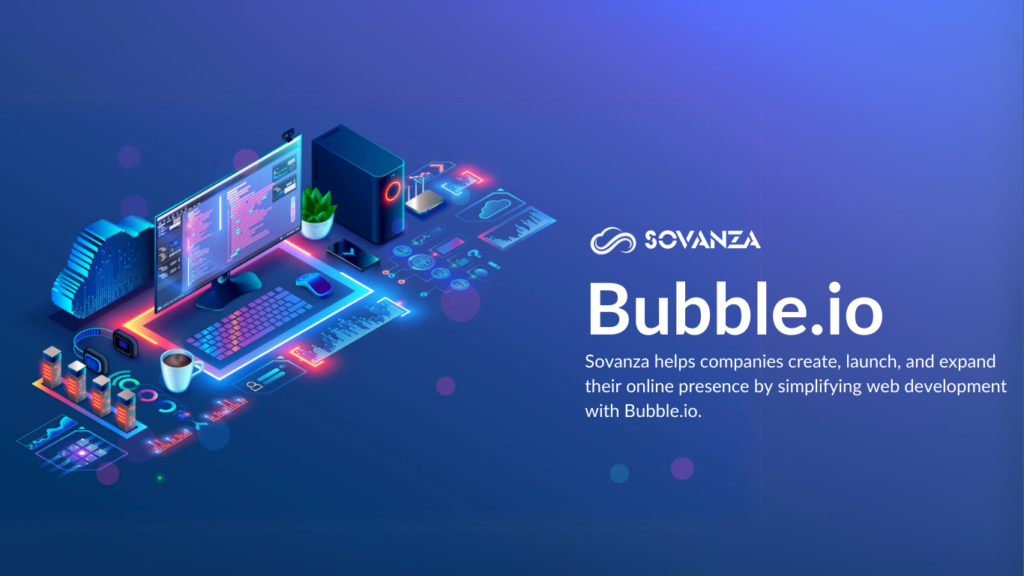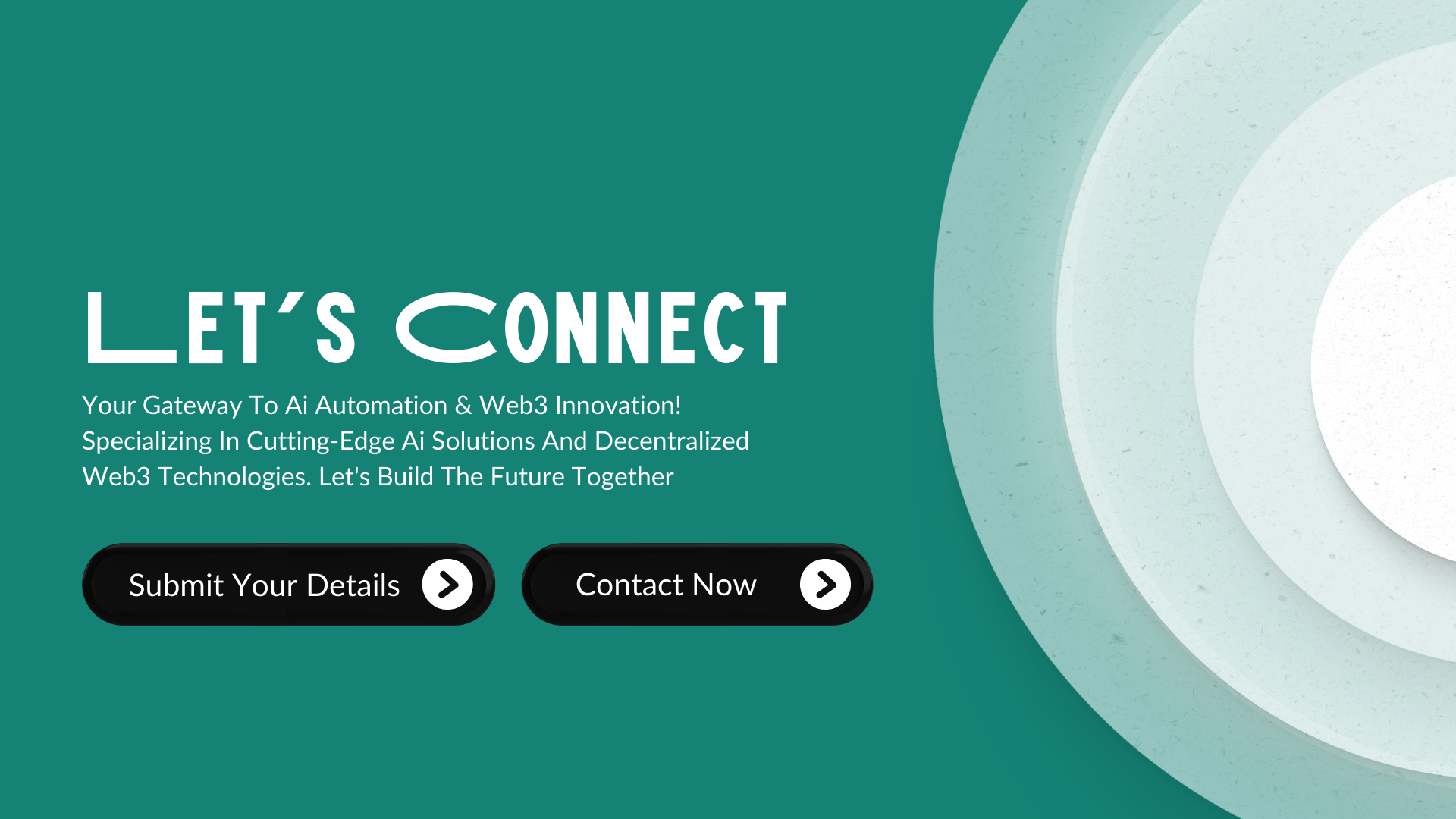
Introduction
In today’s fast-paced digital world, no-code platforms such as Bubble.io are revolutionizing the creation of web applications. Regardless of technical proficiency, Bubble.io allows anybody to quickly and effectively design, create, and launch fully working web applications. Because of its drag-and-drop interface and customizable workflows, it is a preferred tool for entrepreneurs and businesses wanting to realize their ideas without complicated coding.
Sovanza uses Bubble’s capabilities in the USA to help companies create innovative and scalable solutions. From the first concept until launch, Sovanza provides all-inclusive support, ensuring that each web application is tailored to your company’s needs. Combining Sovanza’s expertise with Bubble.io’s user-friendly platform allows businesses to develop robust, cost-effective solutions that foster development and success.
What is Bubble.io?
“No-code” platforms empower app development by enabling non-developers to create complex web applications without writing a single line of code. These tools often come with pre-built templates, integrations, and customizations, making it easier for users to bring their ideas to life quickly and cost-effectively.
Why Bubble.io is Revolutionizing Web Development
“One of the leading no-code platforms currently is Bubble.io. Due to its capacity to develop advanced, data-oriented applications, it has rapidly emerged as a preferred resource for US entrepreneurs, startups, and companies. Bubble.io enables individuals to create, build, and launch entirely customizable web applications irrespective of their technical expertise.
Key Features of Bubble.io for App Development
It is a no-code platform that streamlines the creation of web applications through drag-and-drop design, personalized workflows, and API integrations.
Drag-and-Drop Interface
Users can easily design web pages by dragging and dropping components like text, images, and buttons. Customizable styling options allow precise control over colours, sizes, and fonts. Responsive design tools ensure pages look great on any device, with interactive features like hover effects and animations.
Custom Workflows
Create personalized actions that trigger based on user inputs or data changes, such as showing elements or sending emails. Automated workflows streamline tasks without coding, while advanced scripting options enable deeper customization. Visual workflow builders make it easy to set up and manage workflows.
Database Management
Manage app data visually through tables that support adding, updating, and deleting records. Set up relationships between data entities and define custom fields with validation rules. Import/export options and query builders provide flexibility for managing data, while access control ensures secure user access.
APIs
Easily integrate third-party services like payment processors and email platforms via pre-built APIs. Users can also create custom API endpoints and secure authentication through OAuth. Webhooks and API rate limiting offer real-time notifications and prevent abuse with comprehensive documentation for developers.
Step-by-Step Bubble.io Process
Bubble.io App Development Workflow” offers a guide to creating, customizing, and launching powerful web applications using Bubble’s no-code platform.
Design the App
You can create a visual interface for your app by using Bubble.io’s drag-and-drop editor to add buttons, text, and images without knowing any code. You can also alter your program’s appearance to ensure it works on desktop and mobile platforms.
Set Up the Database
By defining data types, fields, and relationships, you can build and manage your app’s database, store and manage user and app data efficiently, and implement rules and access controls to protect sensitive data and guarantee appropriate user permissions.
Create Workflows
Create individual procedures that decide how your app should react to user inputs like button clicks, form submissions, or page loads. Modal processing can also ensure that actions only start when certain requirements are fulfilled.
Deploy and Launch
Test your app thoroughly, then deploy it on Bubble’s cloud hosting or connect your custom domain and launch it to the public for users to access. After launch, you can monitor app performance and make real-time updates to improve the user experience.
Sovanza: Your Trusted Bubble.io Partner in the USA
Sovanza is the ideal partner for companies in the USA wishing to use Bubble.io for web app development. We provide scalable, tailored solutions that address your requirements, guaranteeing quicker and more affordable outcomes than traditional development. From design to deployment, we provide full support, ensuring a smooth process while delivering high-quality, innovative apps that grow with your business.
How Sovanza Optimizes Your Bubble.io App
Sovanza helps you improve user experience, security, and speed for your online application on Bubble.io. We reduce load times by streamlining procedures and optimizing pictures to ensure your program functions well. We also implement strong security features like data encryption and safe authentication under Sovanza’s direction, shielding your app from possible dangers. Furthermore, Sovanza uses Bubble.io’s design tools to produce user-friendly interfaces that offer a smooth user experience.
Benefits of Bubble.io with Sovanza
Combined with Sovanza’s experience, Bubble.io provides a simple, affordable, and scalable method of developing web applications without knowing any code. This makes it perfect for startups and companies that want to innovate fast.
Ease of Use
Its user-friendly drag-and-drop interface enables users to design and develop online applications rapidly. With Sovanza’s experience, you can quickly design solutions specific to your company’s needs, enabling engineers and non-technical entrepreneurs to construct robust apps without knowing how to code.
Customizable
Various design and workflow capabilities allow you to create anything from straightforward web pages to intricate platforms. By assisting you in tailoring the platform to your particular needs, Sovanza ensures that your app expands with your company.
Cost-Efficient
Conventional app development can be slow and expensive. Businesses can save expenses and development time by integrating Sovanza’s experience with Bubble.io, which provides a quick and reasonably priced way for startups and small enterprises to build scalable, customized online apps.
Solving Bubble.io Challenges with Sovanza
Sovanza enhances your Bubble.io apps by overcoming scalability, performance, and API integration challenges for seamless growth and optimal efficiency.
Scalability
Sovanza ensures your app can grow with your business by designing scalable architecture that supports increased traffic and data. Sovanza optimizes workflows and data structures as your business expands to maintain smooth performance without compromise.
API Integrations
Sovanza simplifies API integrations, managing external service connections efficiently while handling errors and fallbacks. This ensures that third-party integrations run seamlessly, improving your app’s functionality and enabling smooth scaling as your business evolves.
The Future with Sovanza
Sovanza is at the forefront of the no-code revolution by creating creative, scalable online apps with Bubble.io’s state-of-the-art features.
Upcoming Features and Enhancements
With new features like improved mobile speed, advanced connectors, and customization tools, Bubble.io is always changing. Sovanza uses these changes to create web apps that are even more dynamic, scalable, and state-of-the-art to keep our clients ahead of the curve.
Trends in No-Code Development
Services such as Bubble.io are leading the way in the ongoing development of the no-code trend. Sovanza follows this trend by leveraging Bubble.io’s capabilities to generate creative, affordable, and easily accessible web app solutions for companies, accelerating and optimizing web development.
Get Started with Sovanza
To start with Sovanza, reach out through their website or contact us directly via email or phone. After an initial consultation, Sovanza will use Bubble.io to construct a customized plan for no-code app development to understand your project goals. They will handle everything, including testing, third-party integrations, workflows, and database configuration. Sovanza will help launch your app when ready and offer continuing assistance to guarantee scalability and seamless operation. When you work with Sovanza, you may quickly and cheaply develop your app ideas without knowing any code.
Conclusion
In conclusion, Bubble.io has become a powerful tool for building web applications without complex coding, opening doors for entrepreneurs, startups, and businesses to innovate and grow. Bubble.io empowers users to create dynamic, data-driven, functional, and scalable apps with its intuitive drag-and-drop interface, customizable workflows, and seamless API integrations.
Partnering with Sovanza ensures businesses can fully leverage Bubble.io’s capabilities, gaining access to expert guidance and tailored solutions that meet their needs. Whether you’re looking to build a simple app or a more complex platform, Sovanza helps you navigate the entire development process, optimizing performance and security.
As the no-code movement continues to evolve, Bubble.io and Sovanza’s expertise provides a cost-effective and efficient way to quickly bring your ideas to life. Businesses can now create innovative, high-quality web apps that scale with their success, making Bubble.io and Sovanza a winning combination for the future of web development.
FAQS
What is Bubble.io?
The no-code platform Bubble.io allows users to create web applications without knowing any code. It is user-friendly for all skill levels, so anyone can construct scalable and reliable web apps.
How long does it take to build an app on Bubble.io?
The quantity and complexity of the software determine its development time. While more complicated apps could take weeks to develop, simpler apps can be completed in a few days.
Can I integrate third-party services with Bubble.io?
Yes! It supports integrations with various APIs, allowing you to connect your app with third-party services like payment gateways, CRMs, and more.
Is Bubble.io suitable for large-scale applications?
It is scalable, making it an ideal choice for building everything from MVPs to fully-fledged enterprise-grade applications
Why should I choose Sovanza for Bubble.io app development?
Sovanza offers deep expertise in using it to create custom web applications. Our experienced team ensures your project is built to the highest standards, focusing on quality, scalability, and security.

